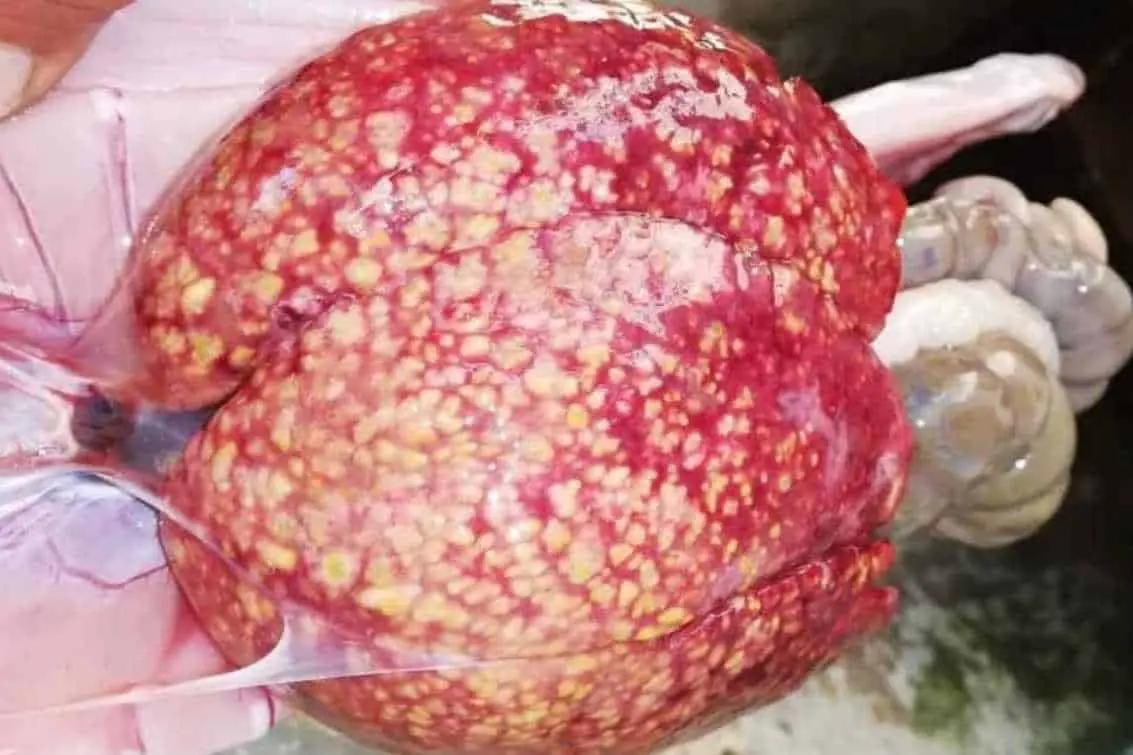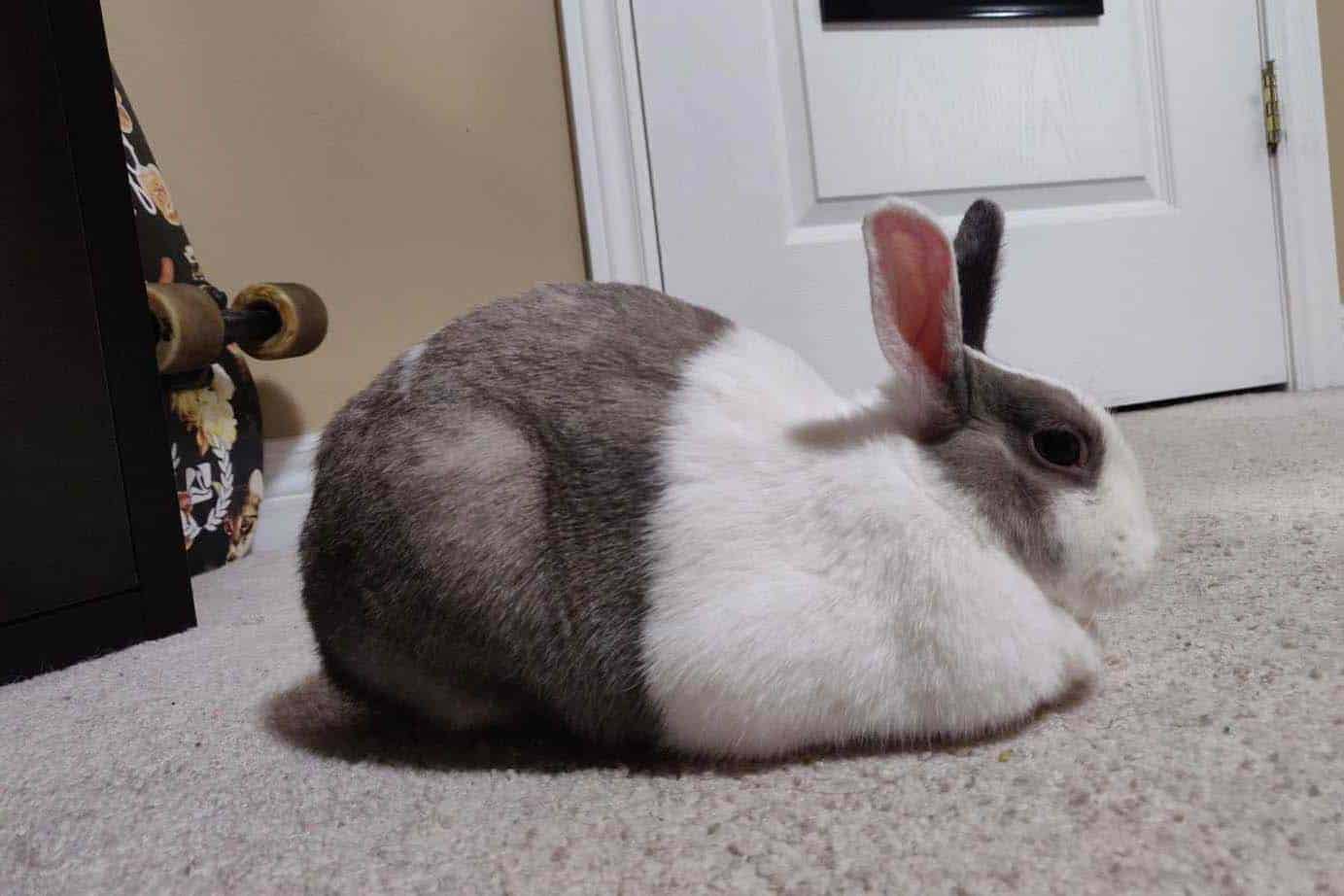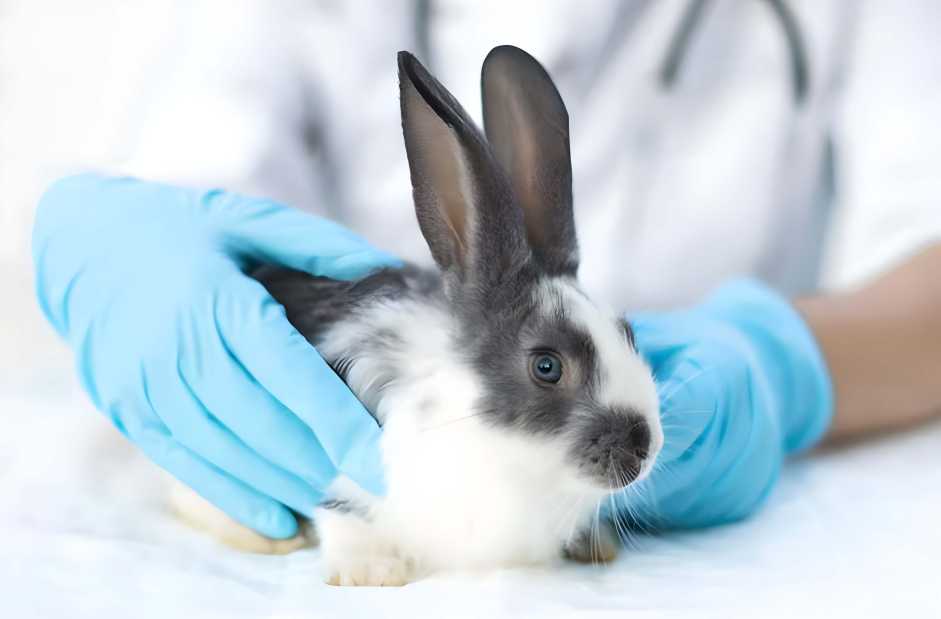Coccidiosis is a worldwide type of disease plaguing rabbits and pet owners throughout the years. It dramatically affects the rabbit’s health, and worse, it can end their lives.
Have you heard of coccidiosis? This definitive guide will help you learn about coccidiosis in rabbits, its types, root causes, familiar symptoms, treatment, prevention, and cost.
| Coccidiosis Quick Information | |
| Types | Intestinal Coccidiosis & Hepatic Coccidiosis |
| Causes | Poor hygiene habitats, absorption of infected rabbit’s feces, and Polluted feed and water sources; |
| Symptoms | Lethargy, Decreased appetite, Abdominal pain, Weight loss, Weakness, Dehydration, Continuous hunching, Depression, Rough skin condition, Anorexia, and Blood found in feces. |
| Diagnosis | Fecal spot through a microscope, Performance of fecal float test, & Radiography |
| Treatment | Oral medications, Fluid therapy, & Antibiotic therapy |
| Recovery | Sanitation Program, Regular Disinfection, Nutritious Diet Plan, & Reduction of Stressors and Overcrowding |
| Cost | $100-$200; |
What is Coccidiosis in Rabbits?

Coccidiosis is a global, infectious disease from a single-celled organism called coccidia. Typically, coccidiosis is caused by the absorption of polluted water or feed.
The most familiar types of coccidia found in rabbits are Eimeria Species. Eimeria species are organisms that can be transmitted through droplets from one rabbit to another.
These organisms will stay on the bunny’s intestines and eventually pollute the liver. Rabbits can gulp these droplets from two familiar sources: contaminated feed, water, bedding, or direct contact with an infected rabbit.
Almost every rabbit has a probability of contracting coccidiosis. However, this illness can be most likely seen in younger rabbits during weaning.
On top of that, the chance of having this disease in rabbits can be attributed to different factors: a jammed environment, stress, and poor hygiene.
The signs of coccidiosis are felt from the intestines down to the liver. The spread is caused by the migration of the organisms in the body organs of rabbits.
The intensity of this disease depends a lot on the Eimeria species. The bunny’ age, immune system, and environmental triggers can also affect the seriousness of the condition.
Rabbits who are more mature and well-balanced can only be slightly affected. On the other hand, younger and sensitive bunnies have a higher chance of yielding to the infection. In the worst-case scenario, young rabbits may die.
What Are the Types of Coccidiosis in Rabbits?
There are 25 identified species of coccidian found in rabbits. But there are two main types of Coccidiosis: Intestinal Coccidiosis and Hepatic Coccidiosis.
Intestinal Coccidiosis

Intestinal coccidiosis is the type that can thrive in rabbits who live in poorly sanitized conditions. But intestinal coccidiosis can even grow in rabbits raised with excellent care.
Usually, rabbits will not feel the sickness since the signs of this type of coccidiosis are not potent. Most often than not, pet parents will not usually see the early signs of this disease.
Younger rabbits which are a few weeks up to 5 months old, especially those that are newly weaned, are the ones that are mostly affected by this disease. Other risk factors include sensitive immune systems and stress.
Hepatic coccidiosis most likely spreads in unhygienic spaces. Younger bunnies are the usual victims of this kind of coccidiosis. However, the liver type of this disease can likely infect all ages.
Experts found that rabbits affected by this illness have rough skin and are anorexic. Later, hepatic coccidiosis can lead to bile ducts, swollen liver, and gall bladder. In rare instances, bacterial infections may also follow.
What Are the Root Causes of Coccidiosis in Rabbits?
Coccidiosis is an illness that originates from the rabbit’s habitat. Usually, it exists in different surroundings like shelters and breeding establishments for rabbits.
Pet rabbits can get coccidiosis by ingesting the feces of another infected rabbit. These oocytes or eggs transported from wastes will take around two days to become infectious. Plus, this can thrive and stay in humid environments for extended periods.
In addition, bunnies can also acquire coccidiosis by ingesting contaminated food or water sources.
What Are the Familiar Signs of Coccidiosis in Rabbits?

Many pet rabbits whose coccidiosis infects will not manifest any apparent symptoms or early clinical signs. Most often than not, bunnies carry the parasites in their intestines and transmit them to other rabbits in their surroundings.
Nonetheless, some familiar signs of illness are found in these tiny creatures: lethargy, decreased appetite, abdominal pain, weight loss, weakness, dehydration, continuous hunching, depression, rough skin condition, anorexia, and blood found in feces.
In severe occasions of intestinal coccidiosis, paralysis, convulsions, and immediate death may happen. On the other hand, in grave conditions of hepatic coccidiosis, bile ducts and liver damage can occur. Coma may follow these signs.
How to Diagnose Coccidiosis in Rabbits?
Rabbit-savvy veterinarian will carefully check the pet rabbit and will discuss if there is any history of coccidiosis. While the illness can affect visible changes in the liver, stomach, and intestines, diagnosing coccidiosis in rabbits is quite challenging.
Veterinarians often have two methods of identifying coccidiosis: examining a fecal spot through a microscope or performing a fecal float test.
The veterinarian will get a fecal sample from the bunny and check this under a light microscope. They can also perform a fecal float test to know if cysts or coccidia are present.
But if a severe case is suspected, the veterinarian may opt for radiography. Through radiographs, vets can quickly see if there are stomach or liver blockages and fluid building up.
What Are the Treatments for Coccidiosis in Rabbits?

While coccidiosis can be deadly to rabbits, the great news is that it can be treated and cured. Treatments for coccidiosis may significantly vary between mild and severe cases.
Mild Cases
Mild cases in healthy bunnies are successfully treated through the oral intake of medications fighting coccidia. On top of that, to have a successful treatment, fur parents should combine oral medicines with excellent care and supplementary feeding.
Remember that feeding can be pretty hard for rabbits diagnosed with coccidiosis since this illness’s usual symptoms are rabbits’ decreased appetite. To overcome coccidiosis, sicked bunnies must eat. If they refuse to eat, pet parents should be ready to assist and initiate feeding.
Starvation of ill rabbits will lead to gut stasis which is the absence of gut movements. If neglected, gut stasis can be deadly to bunnies.
The owner can use a syringe and regularly put a liquid recovery diet into the little bunny’s mouth. Continue doing this until the rabbits are delicate and can eat by themselves.
Severe Cases
On the other hand, rabbit-savvy veterinarians will require hospitalization. Vet doctors advise this to treat dehydration through fluid therapy. Also, hospitalization will provide intensive care that these little teddy bears need.
Further, vet doctors can also recommend that pet rabbits undergo antibiotic therapy. Antibiotics will not eliminate the parasite found in the bunny.
But this will significantly help your rabbit in improving his immune system. Plus, your bunny may develop a lifetime immunity against coccidiosis.
Bear in mind that the vet will require bunnies to have regular treatments regularly in severe cases.
The veterinarian will get another fecal sample to ensure that the pet rabbit no longer has coccidia eggs at the end of treatment.
What is the Average Cost of Treating Coccidiosis in Rabbits?

The average cost of treating coccidiosis for bunnies is $100-$200. Nonetheless, this might differ from mild and severe cases. On top of that, intestinal and hepatic coccidiosis treatments vary, so that they may require different prices.
How Will Rabbits Recover from Coccidiosis?
Excellent hygiene is essential in giving your baby bunny the best potential for a successful recovery. Pet parents should ensure a good sanitation program in their bunny’s home.
Rabbits are coprophagic animals; that is, they gobble their waste. For this reason, bunnies can be reinfected. Owners should always clean their rabbit’s habitat to eliminate all coccidia cysts to avoid this dilemma.
Fur parents may use a cleaning formula to clean all enclosures, water and food bowls, and bottles during recovery. Further, the bedding should be maintained sleek and dry. Owners should regularly disinfect the rabbit’s cage with an ammonia solution to kill parasites.
On top of that, bunnies with coccidiosis should have a complete nutritional food diet to boost their overall immune and digestive system. Owners should make timothy hay and high-quality pellets available to their pet rabbits. Water should also be accessible 24/7.
How to Prevent Coccidiosis in Rabbits?
As the adage says, it is much better to prevent instead of cure. So, the final question is, how will you stop your rabbit from contracting coccidiosis?
The excellent way to go about this is to maintain good hygiene. Proper hygiene is achieved by regularly cleaning your bunny’s enclosure. Plus, the beddings should be kept dry. On top of that, you should prevent your rabbit from eating on the hutch floor as much as possible.
Owners should also eliminate leftover hays or pellets found in the rabbit’s food rack. If bunnies spend time outside, letting them in the garden is much better. This will hugely minimize the risk of exposure to parasites.
While this may often be overlooked, ultraviolet light coming from the sun rays also help in destroying coccidia eggs and disinfecting the area.
To add, pet parents are responsible for avoiding the overcrowding of bunnies. Socialization and companionship are vital for bunnies. But this should be well-balanced to prevent the transmission of coccidiosis.
Further, when choosing a bunny pet, experts recommend that new parents adopt or purchase rabbits from notable rescue shelters or reputable breeders. Since these institutions adhere to strict hygiene, owners can minimize their chance of getting a rabbit infected with coccidiosis.
Final Thoughts
We all want to give our baby bunnies the best possible care and love that they deserve. Like their fur mom and dad, rabbits also want to spend memorable and meaningful time of their lives with them.
Help your bunnies live a fulfilling and coccidiosis-free life. Provide them with a sleek dwelling and a nutritious diet because it is always better to be sure than sorry.
